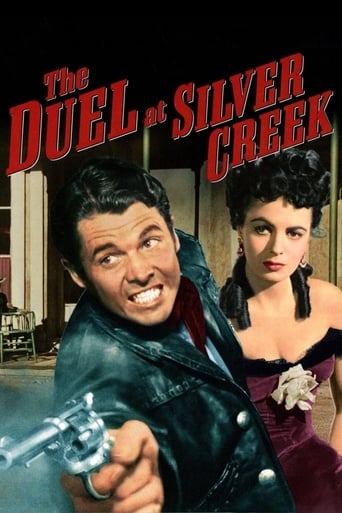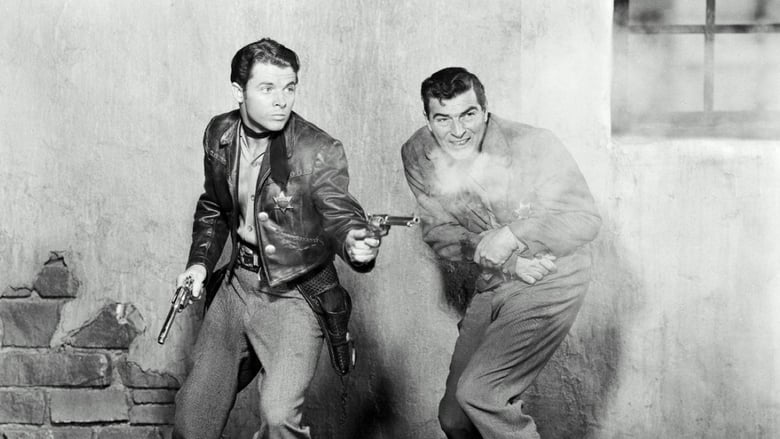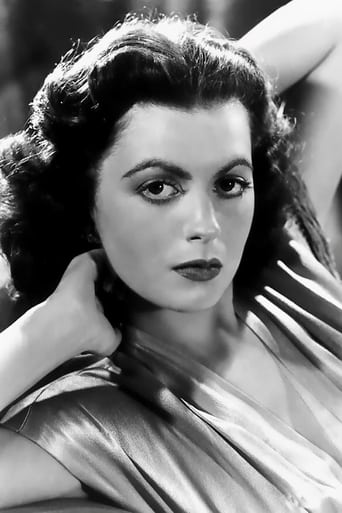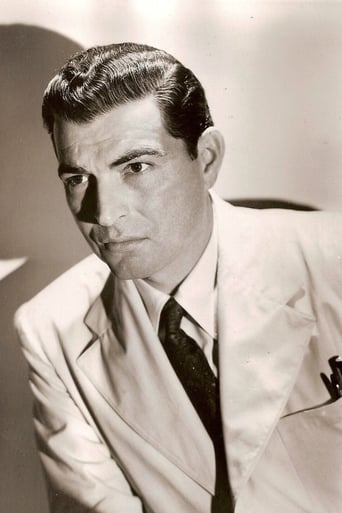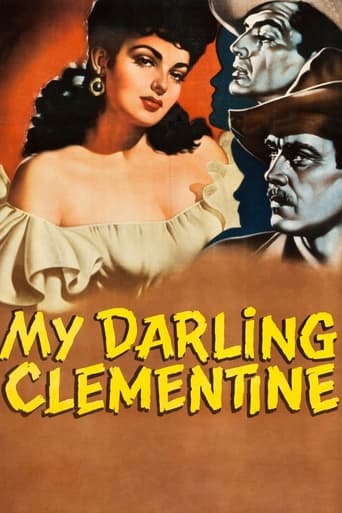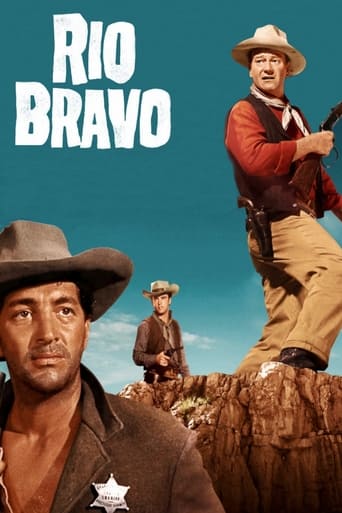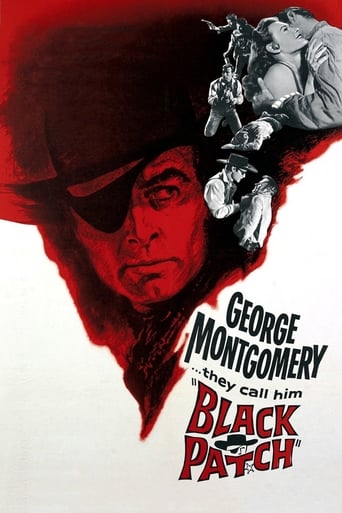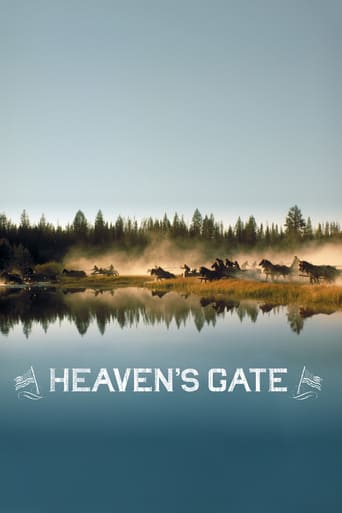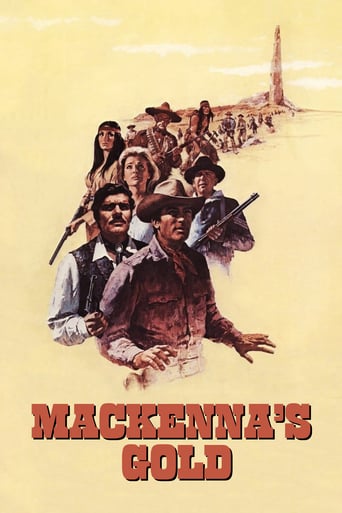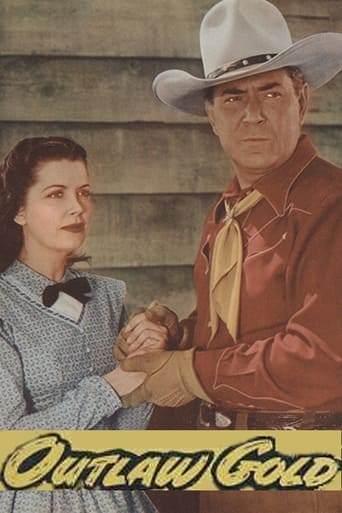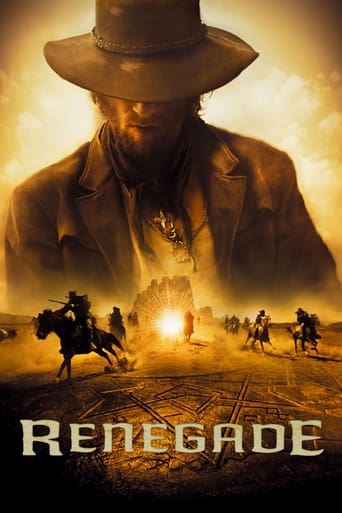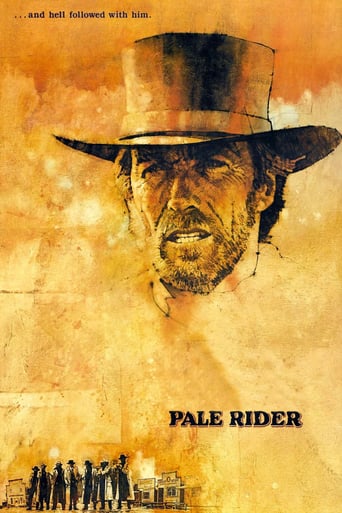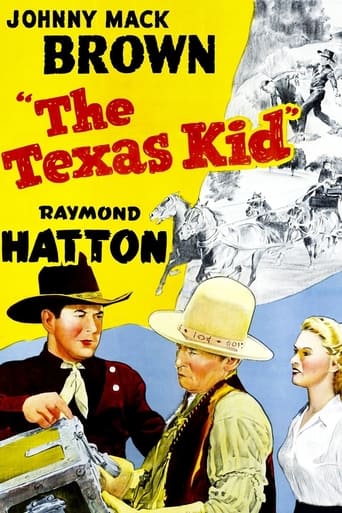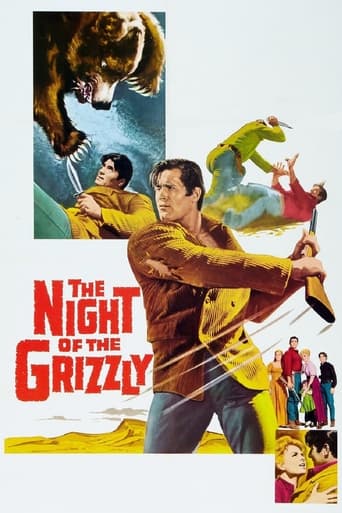The Duel at Silver Creek (1952)
When a gang of ruthless claim jumpers brutally murders his miner father, a gunman known as the Silver Kid joins forces with the local marshal to free the tiny town of Silver City from the clutches of the dastardly villains.
Watch Trailer
Cast


Similar titles
Reviews
It's entirely possible that sending the audience out feeling lousy was intentional
While it is a pity that the story wasn't told with more visual finesse, this is trivial compared to our real-world problems. It takes a good movie to put that into perspective.
It's easily one of the freshest, sharpest and most enjoyable films of this year.
The movie turns out to be a little better than the average. Starting from a romantic formula often seen in the cinema, it ends in the most predictable (and somewhat bland) way.
This is a convoluted and often frustrating tale of claims jumpers ruthlessly hopping from threat to threat (and killing them anyway) that seems to be too determined to keep a constantly tense pace which ultimately causes its downfall. It has great color photography and a great set-up, but there are far too many characters written with too many clichés, but often takes some fascinating, sinister turns. The real reason to watch this movie is Audie Murphy, photographed with sort of a shining light around him that makes his already shiny black leather jacket seem to shine in the darkness seen constantly around him. Howard Hughes' former protégé, Faith Domergue, plays a well dressed, well spoken young lady who suddenly strangles a wounded man to death, yet remains sugary sweet throughout the film. She's striking in her beautiful period dresses, but its easy to see why she quickly faded away. Susan Cabot scores better as the tough Dusty whom several of the men think of basically another one of the guys, but occasionally see through her tomboy looks as being a true woman. Stephen McNally is more the traditional hero, and even though Murphy gets top billing, the best photography and the girl, McNally's character is really the moral compass of the film. Other than an early film appearance by Lee Marvin, the other supporting characters all seem to jumble together.
The Duel at Silver Creek is a nice example of how much fun the Western used to be before the genre got all serious and realistic.In this story, claim jumpers are running wild near the town of Silver City. They're bushwacking people who have small claims around the gold rich Silver Creek, forcing them to sign over their claims and then killing them. But they get more than they bargain for when they try to jump the claim of a father and son. They do get the claim and kill the old man, but his son (Audie Murphy) kills three of the gang with his silver-handled revolvers. "Lightning" Tyrone (Stephen McNally), the marshal of Silver City, rounds up a posse to go after the claim jumpers but he ends up shot in the shoulder and the gang escapes. "Lightning" is taken to nearby Fort Lowell, where he's patched up but his shooting hand is crippled. He doesn't have the strength to pull a trigger anymore. While recovering at Fort Lowell, "Lightning" becomes infatuated with Opal Lacey (Faith Domgergue), a pretty lady in a pretty dress he takes to calling "brown eyes". But the audience soon discovers those brown eyes disguise a great many unpleasant things. "Lightning" returns to Silver City to find an old friend dead, shot in the back. He suspects Johnny Sombrero (Eugene Iglesias), the local bad man who happens to look like a Mexican Liberace, but has no proof. The marshal also runs into the son of the gold miner slain at the start of the film. Dubbed the Silver Kid now, the young man becomes "Lightning's" deputy and the two of them are pitted against the machinations of Johnny Sombrero, the claim jumpers and the beautiful Opal. Joining them is Dusty (Susan Cabot), a tom boy who's had a crush on the older "Lightning" for years. He doesn't see her as anything more than a little sister, but the Silver Kid has more romantic intentions toward her. The fast moving story has quite a few twists and turns before climaxing in a big gun battle between the claim jumpers and a new posse, which finally ends when one of the oldest and dumbest tricks in the book actually works.I liked this film a lot but I have to admit, it's a fairly generic 1950s Western. By modern standards it's corny with two-dimensional characters and unremarkable dialog. The plot is a bit more involved than you might expect, however this isn't a story with any great depth or meaning to it. It's a fairly basic Western with good men, a bad woman and guns getting shot out of people's hands. If you're looking for gritty realism and edgy storytelling, this isn't the movie for you.The Duel at Silver Creek is never anything more than a pleasant diversion and I don't think the filmmakers wanted it to be anything more than that. It moves at a brisk pace with plenty of traditional Western action. There's actually a great deal of stuff going on in the story, leading to simplistic but believable conflict between the characters. It's a great looking film with a couple of scenes that have a quite a visual kick to them. All of the actors do a good job for this sort of melodramatic tale. It's just a nice piece of entertainment.It's nowhere near being one of the great Westerns, but The Duel at Silver Creek is a good Western. If you can get past stuff like the claim jumpers leaving a ransom note and literally signing it "The Jumpers", I think you'll get a kick out of this movie.
I'm not really sure what director Don Siegel was going for here, but it looks like he might have been trying to put one over on the movie Western fan. The first tip off is the scene where we're introduced to Marshal Lightning (Stephen McNally) of Silver City and a confrontation he has with Johnny Sombrero (Eugene Iglesias). Johnny Sombrero? This felt like one of those Mel Brooks spoofs to come down the pike a couple of decades later, I'm thinking of "Blazing Saddles". Even the name of bad guy Lacy's business, the Acme Mining Company, brought me back to those Wile E. Coyote cartoons where the hapless varmint just couldn't keep up with the Roadrunner. Are you starting to get the picture? Siegel then peppers the script with characters like the Silver Kid and Dusty; he even gives the outlaw leader's moll two names - Opal Lacy and Brown Eyes. All very camp.But also all very entertaining. The principals take the ball and run with it, and give them credit for for doing it without cracking up. There are so many inconsistencies in the picture that I almost lost count. How about Opal Lacy's (Faith Domergue) first scene when she chokes the claim jumped miner brought into the Army Hospital? With no time to loosen the bandanna, the Cavalry doc simply picks it up to cover the face of the dead miner. No suspicion there, right? And say, didn't the Silver Kid (Audie Murphy) gun down Tinhorn (Lee Marvin) after that card game when the Kid laid down three aces? Tinhorn shows up later none the worse for wear. At least Marvin stayed dead after he got shot by John Wayne in "The Comancheros". But I did get a kick out of The Kid's name for Tinhorn - 'sheep dip'. Audie Murphy may not have had the face of a killer, but he killed me with that line.I'll say this for Murphy though - even though he never quite brought his film persona up to the level of his real life war record, he has about the boldest action move I've ever seen in a Western in this flick. At the final shoot out at the mining camp, Murphy dives through the window and INTO the outlaw cabin! There could have been a whole boat load of bad guys in there and he could have come out like a sponge. But he did it in the name of love, rescuing his gal Dusty (Susan Cabot). I thought it was pretty cool the way Kid compared relationships and life to a hand of poker; with that save he showed all his cards.Of course the good guy team of Marshal Lightning and Silver Kid come out on top in the finale. It blows by pretty quickly, but it's revealed that Rod and Opal Lacy weren't siblings, which didn't make a whole lot of sense given the way the story was going. Lightning uses the old 'throw the rock in the other direction' trick to gun down the bad guy, and the only thing missing was a big old Cadillac to drive the heroes off into the sunset. Mel Brooks would have thought of that.
Duel At Silver Creek is a co-starring vehicle for Audie Murphy, the last of the great B-movie western stars, briskly directed by the great Don Siegel. The baby-faced Murphy, who made 46 films in 20 years before dying in a plane crash, was the most decorated soldier of World War II. (In fact the star's appearance can be taken as an ironic comment on visual stereotyping as John Wayne, who looked every inch a hero, avoided the call up entirely.) For the most part Murphy starred in second-rate vehicles with second-rate talent. A few titles have stood the test of time, such as Red Badge Of Courage (1951) or The Unforgiven (1960) both directed by Huston, or Boetticher's fine A Time For Dying (1969), also the actor's last film. By and large, however, Murphy suffered from a bland screen persona which only strong direction and casting could overcome, even if most of his vehicles remain watchable.Siegel, who went on to direct Dirty Harry (1971) and Charley Varrick (1973) was here at an early stage in his career, but had already made three or four other westerns before this one, his first in colour. Duel At Silver Creek is perhaps the most successful of those so far principally because the director is able to steer events along quickly enough to cover most of the weaknesses inherent in the script, and able to create a cast strong enough to balance out Murphy's presence. It opens as Luke Cromwell and his older partner work a gold claim, only to become the latest victims in a murderous claim-jumping racket. Luke's partner is forced to sign over the property while, after an exciting chase and shootout, Cromwell only narrowly escapes his own abrupt end. Soon he resurfaces as 'the Silver Kid', the baby faced gun-toting gambler, in a town where Marshall 'Lightning' Tyrone is also after the crooks. Chief among the suspects is Johnny Sombrero, a taunting thug who may be in league with the outlaws. The Marshall begins to develop an infatuation with the Opal Lacy (Susan Cabot), sister of the chief villain who by this time has also arrived in town. Meanwhile, handicapped by a wound, Tyrone is forced to turn to the Kid when the existing deputy is shot, and the two form an uneasy partnership.The above plot summary shows just how clichéd many of the plot points of Silver Creek are. A lot of the film reveals its B-movie origins, perhaps chief of which is the cliché of the crippled lawman. As the Marshall nurses his secret weakness, still hoping the keep the 'indian sign' over the ambitious Sombrero, the obvious irony is his reluctant need for the younger man to come to his aid. To this one might add the over-familiar dichotomy between the woman of the world (Opal) and the good girl (Dusty), the hiding of a key witness in a secret cave, as well as Silver Kid's conspicuous white handled armaments - conventions familiar to those versed in the genre. Despite these commonplace matters, Siegel still manages to turn in one or two striking scenes, such as when the sexually provocative Opal abruptly strangles a wounded man awaiting the doctor (thereby demonstrating the dead end nature of her charms) or when Pop, the original deputy, is shot and left facedown in the rain. Siegel's film has the advantage of co-starring Murphy with Stephen McNally as the Marshall and, after the opening sequence; they more or less spend equal time on screen together. McNally's maturity, both as actor and character, balances out the Kid's inexperience nicely. In particular the older actor's voice-over (a relatively unusual device in an otherwise straightforward western of this sort), places a lot of the action in context, adding an authoritative framework to somewhat flimsy proceedings. It also has the useful advantage of not requiring the Kid to explain himself too often, where a lack of gravitas would be a disadvantage. Several times explicit reference is made to the Murphy's youthful appearance, so at odds with his lethal potential. "He didn't have the face of a killer," says the Marshall on first sight of his ally-to-be, "but I noticed his hands were quick and sure." In fact the Marshall's authoritative voice-over like this, grounding events in descriptive seriousness, relates the film to a genre form that would be very familiar to contemporary viewers: the radio western. (I don't think Murphy ever did a series on air). In radio drama conventions of the period, a single male narrator frequently might 'carry' events by the force of his personality, his voice the sole source of moral judgment.Dressed in black leather, self conscious and slightly gauche, the Kid's character and his relation to a mature lawman reminds one of 'Mississippi' in Hawk's far superior El Dorado (1966), played by James Caan, or the Ricky Nelson part in the earlier Rio Bravo (1959). These later roles would be better developed, both in their relationship to the older mentor (Wayne, in both cases) as well as the moral intelligence behind a flashy rig. Set up with double guns, reserved although unnervingly assured, the Silver Kid remains two dimensional, a perception that not even his awkward romancing of Dusty can allay. Fortunately, as well as the strong role of the Marshall to distract us, there are some colourful characters further down the cast list. Notable is Johnny Sombrero (played by actor Eugene Iglesias, looking remarkably like a young Sean Penn) - as well as Tinhorn Burgess an already effective Lee Marvin, then currently working his way up through the ranks of B-heavies to future stardom.Silver Creek remains excellent entertainment, notably in the vivid DVD reincarnation that revels in a crisp colour picture with a range of vivid colours characteristic of 1950s' film stock. Incidentally, modern viewers will relish lines like (on the Marshall's damaged hand) "It's going to be kinda stiff for a while but you need to keep massaging it," as well as (on Opal's coded attractions) "Women like that are likely to a put a man's shooting iron plum out of action." Others will simply want to buy this and hark back to a less cynical period of western production when, with little psychology and angst, the biggest clue to man's intent was the size of his sombrero.

